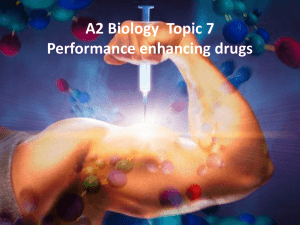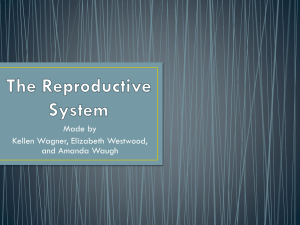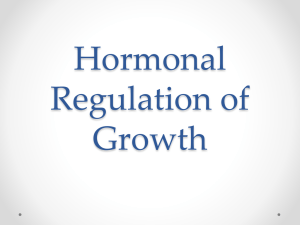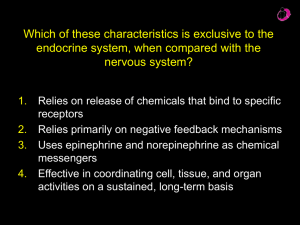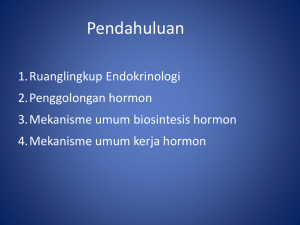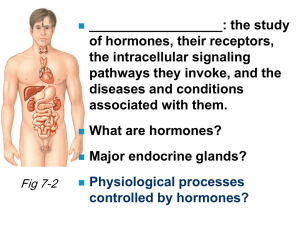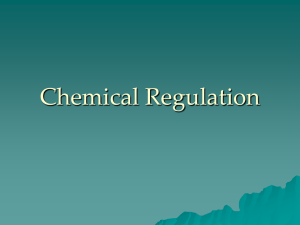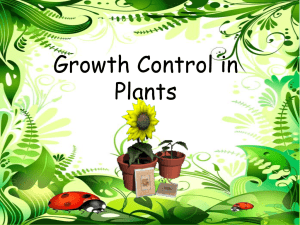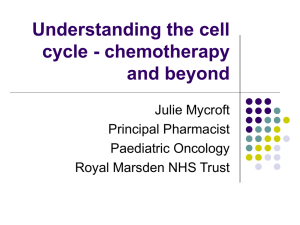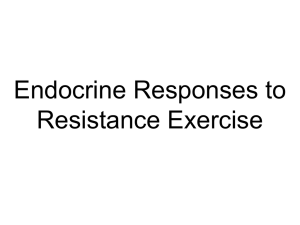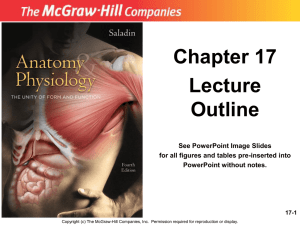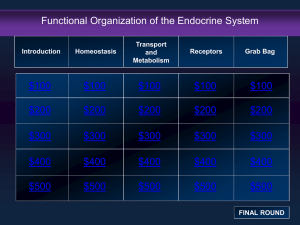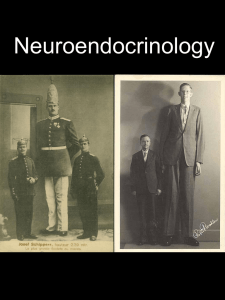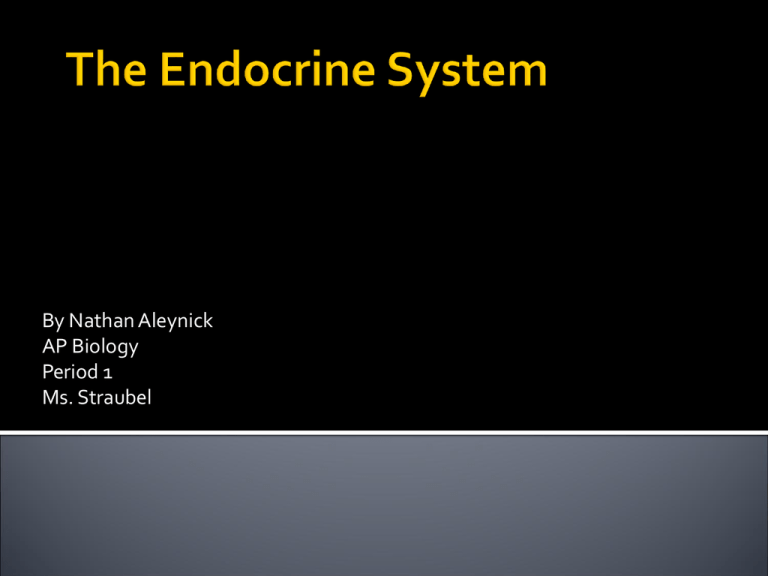
By Nathan Aleynick
AP Biology
Period 1
Ms. Straubel
The endocrine system in charge of producing
and distributing hormones through out the
body.
Hormones are used by the body to bring
about long term changes (Ex. Puberty,
Ovulation) by bonding to their target cells.
Hormones are responsible for long distance
communication within the body.
The endocrine system works with the
nervous system to keep the body in
homeostasis.
Balance is maintained using feedback loops.
Feedback loops come in two forms:
Negative: Most prevalent of the two. The nervous system
indicates an imbalance in the body, and the endocrine
works to reverse the problem to maintain balance (Ex.
High blood sugar is reversed with insulin).
Positive: Less prevalent of the two. The nervous system
indicates that a change is beneficial and the endocrine
system works to enhance the change (Ex. Uterine
There are three different kinds of molecules that could be
hormones:
Protein/Peptide hormones
Anime (derived from amino acids)
hormones
Steroid hormones
Hormones are secreted
by a gland, enter the
bloodstream and then bind to
their target cells.
Once the hormone is bonded to their
target cell, a response is triggered.
Local regulators work similarly to hormones
except that they travel between neighboring
cells rather than long distance.
Local regulators convey messages through
what is called paracrine signaling.
Ex. Nitric oxide is released by endothelial cells
when O2 levels are low, causing other
endothelial cells to relax and increase blood
flow.
No hormones are produced by the posterior
pituitary gland.
Rather, it stores and secretes the hormones
produced by the hypothalamus.
The hypothalamus produces hormones for
the posterior pituitary gland.
Oxytocin: A peptide hormone that stimulates
the contraction of the uterus and mammary
glands.
Antidiuretic hormone (ADH): A peptide
hormone that signals the kidneys to retain
water.
Growth hormone (GH): A protein hormone
that stimulates growth and metabolic
functions.
Prolactin (PRL): A protein hormone that
stimulates the production and secretion of
milk.
Follicle-stimulating hormone (FSH): A
glycoprotein that stimulates the production
of sperm and ova.
Luteinizing hormone (LH): A glycoprotein
that stimulates the ovaries and the testes.
Thyroid-stimulating hormone (TSH): A
glycoprotein that stimulates the thyroid
gland to release its hormones.
Adrenocorticotropic hormone (ACTH): A
peptide hormone that stimulates the adrenal
cortex to secrete glucocorticoids.
Triiodothyronine (T3) and Thyroxine (T4):
Amine hormones that stimulate and maintain
metabolic processes.
Calcitonin: A peptide hormone that lowers
the level of calcium in the blood.
Parathyroid hormone (PTH): A peptide
hormone that raises the level of calcium in
the blood.
Insulin: A protein hormone that lowers the
blood glucose level.
Glucagon: A protein hormone that raises the
blood glucose level.
Epinephrine/Norepinephrine: An amine
hormone that raises the blood glucose level,
increases the body’s metabolic activities and
constricts certain blood vessels.
Glucocorticoids: A steroid hormone that
raises the blood glucose level.
Mineralocorticoids: A steroid hormone that
increases the absorption of Na+ and increase
the excretion of K+ from the kidneys.
Androgens: A steroid hormone that aids in
the production of sperm and helps develop
secondary male sex characteristics.
Estrogens: Steroid hormones that stimulate
the development of the uterine lining and
helps develop secondary female sex
characteristics.
Progesterone: A steroid hormone that
promotes the growth of the uterine lining.
Melatonin: An amine hormone that helps
control biological rhythms (Ex. Sleep cycle).
http://www.proprofs.com/flashcards/cardsho
wall.php?title=bio-lecture-3-page-12111lecture
http://1.bp.blogspot.com/_hhUdKwzDmA4/S
wT2uQ41bKI/AAAAAAAAAPw/AQKy5BmKUI
8/s1600/hor.jpg
http://www.ageworks.com/information_on_a
ging/images/endocrinebig.gif

